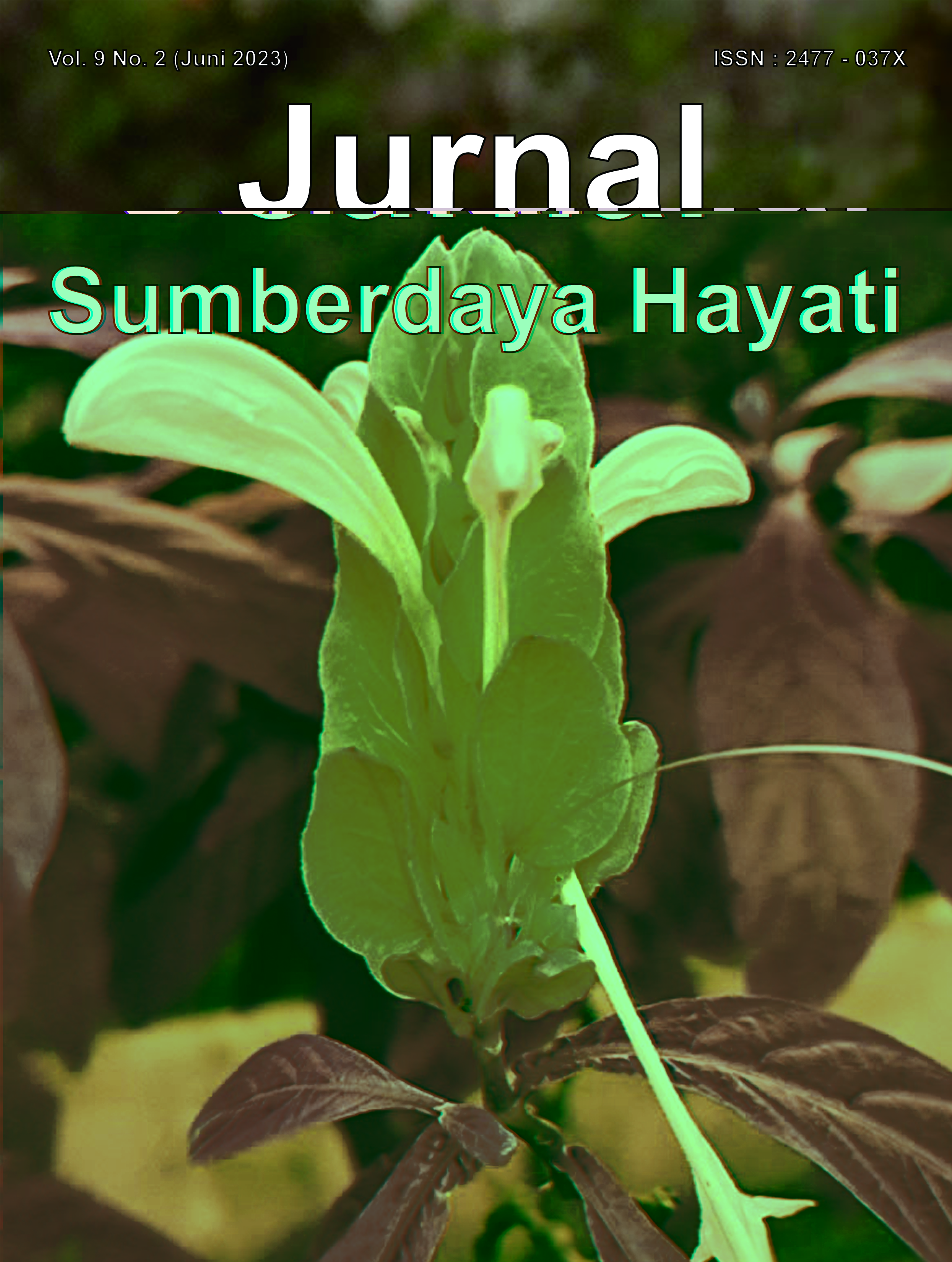Bioprospeksi Bunga Lolipop (Pachystachys lutea Nees) sebagai Sumber Alternatif untuk Produksi Gula
Bioprospecting of the lollipop plant (Pachystachys lutea Nees) as Alternative Source for Sugar Production
Abstract
The lollipop plant (Pachystachys lutea Nees) has been known as an ornamental plant species that originated from the South America region. In Indonesia, some local children claim that the nectar of this flower has a very sweet flavor. This fact has inspired this short bioprospecting study of the lollipop plant with aim to discover its nectar as a potential alternative sugar source. The study was conducted in Bandung, West Java, Indonesia. Four lollipop plants from three different shading level (one plant in full shade andpartial shade, and two plant in full sun exposure) were sampled as many as five flowers from each plant and their nectar droplets, measured using brix refractometer, and also compared with sweet corn seeds (Zea mays L.) and sugarcane stems (Saccharum officinarum L.). The data was then validated for its significance using t-Tests. The result shows that the lollipop plant grown in partial shade has the highest brix percentage (27.00±1.02%) compared to the rest and is significantly different statistically. The brix percentage of all samples combined for this lollipop plant (25.56±0.42%) also surpassed the sugarcane (15.33±0.36%) and sweet corn (12.67±0.47%) and was significantly different statistically.
Downloads
Authors who submit and publish with this journal agree to the following terms:
1. Authors retain copyright and grant the journal/publisher non exclusive publishing rights with the work simultaneously licensed under a Creative Commons Attribution 4.0 International License.
![]()













